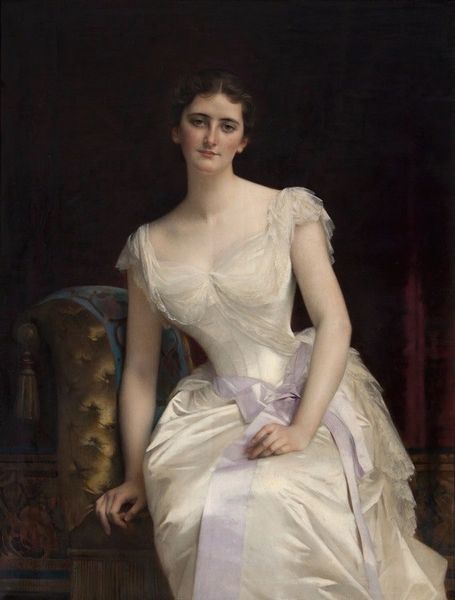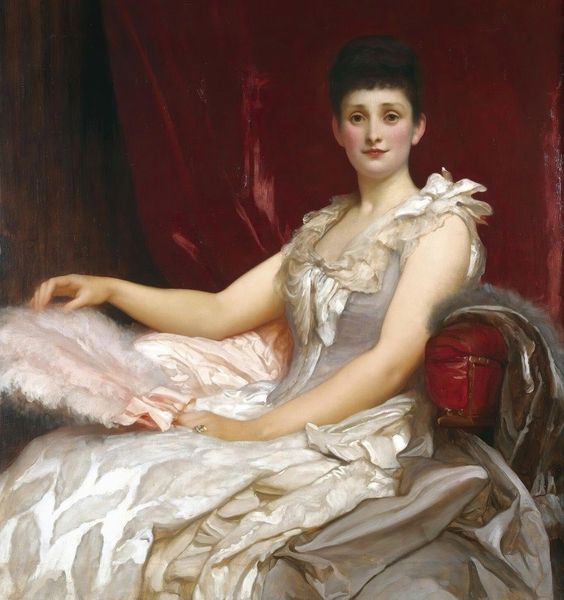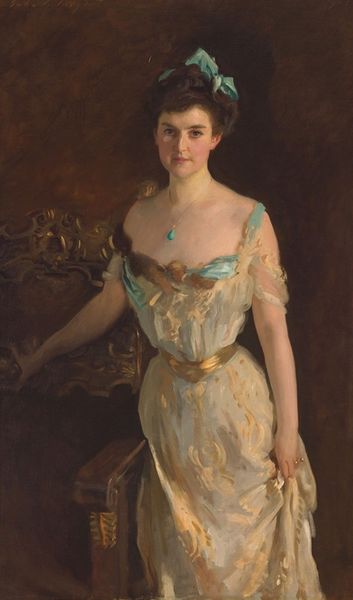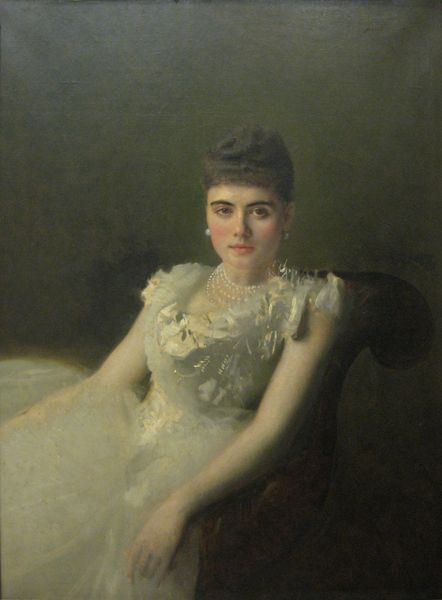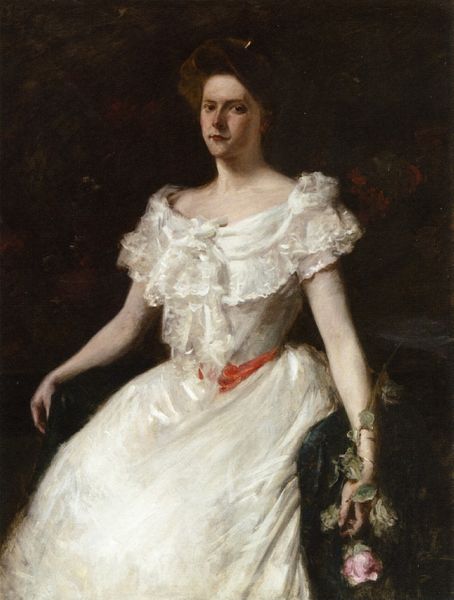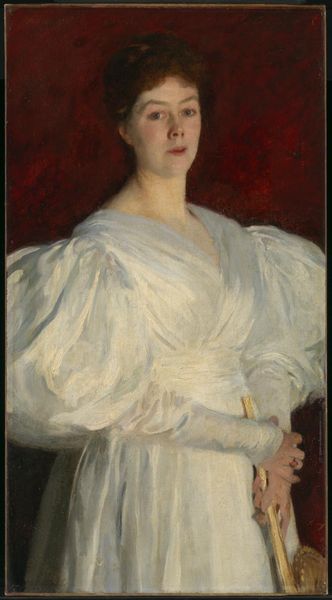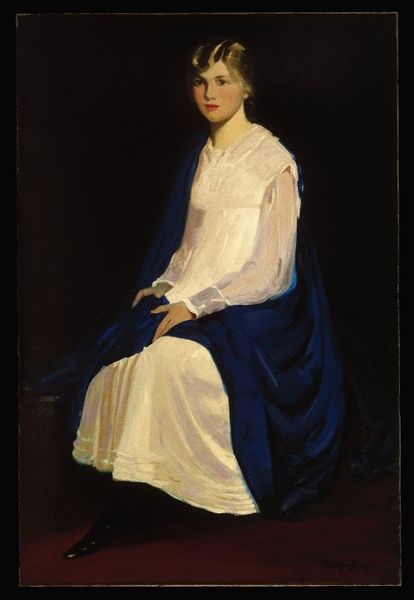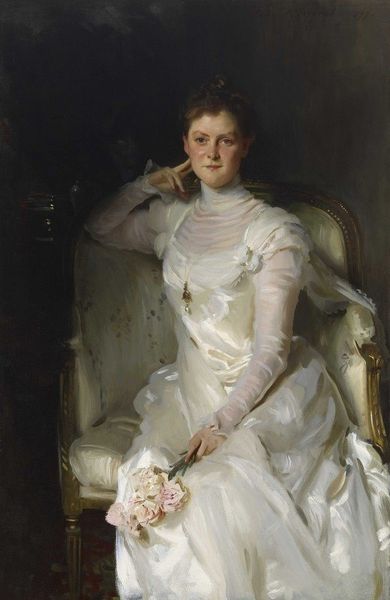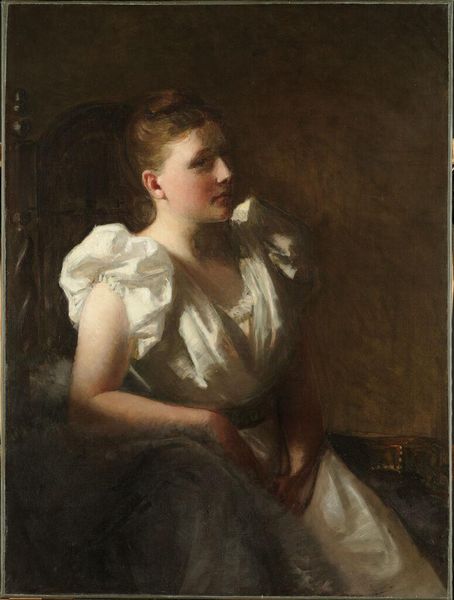
Copyright: Public domain
Curator: Frank W. Benson’s “Lavender Trimmings,” created in 1893 using oil on canvas. The painting predominantly features a woman seated in a formal pose. Editor: My first impression is that the woman seems reserved and serene. The soft palette evokes a quiet elegance; the muted hues create a mood that is rather understated and refined. Curator: Let's consider the semiotics at play here. The limited palette is far from random. The choice of ivory and pale lavender against a neutral background creates a sense of classical restraint. How might one interpret the color choices within the symbolic language of 19th-century portraiture? Editor: Lavender, a tint historically linked to royalty and piety, possibly indicated her aspiration for cultural influence or sophistication. I think this can suggest a deliberate creation of the sitter’s public self. We can't overlook the very conventional attire of the figure, further confirming how the painting constructs social messaging for her, indicating a possible attempt by the sitter to shape her identity within the accepted cultural context. Curator: From a compositional point of view, there's a palpable tension. While the subject’s face is well lit, the lower portions of her form blend back into the mid-ground, thus producing an interplay between presence and concealment. The lighting—note how Benson’s precise management brings depth. This tension lends a modern sensibility to the piece, counterpointing the period aesthetic. Editor: Benson may very well be commenting, albeit discreetly, on women's constrained yet evolving positions within Gilded Age society through visual elements and iconography. It might offer modern viewers insights into historical norms of representation, prompting discussion about shifting definitions around femininity. Curator: Ultimately, the portrait showcases formal arrangements—structure first! The art generates a compelling case about design elements rather than clear symbolic representations of an era. Editor: But art historical settings of the piece undeniably color our encounter. Without symbolic interpretations, the profound depth of past narratives escapes our view. A comprehensive viewpoint connects content and context while unveiling artistic techniques and aesthetic value!
Comments
No comments
Be the first to comment and join the conversation on the ultimate creative platform.

